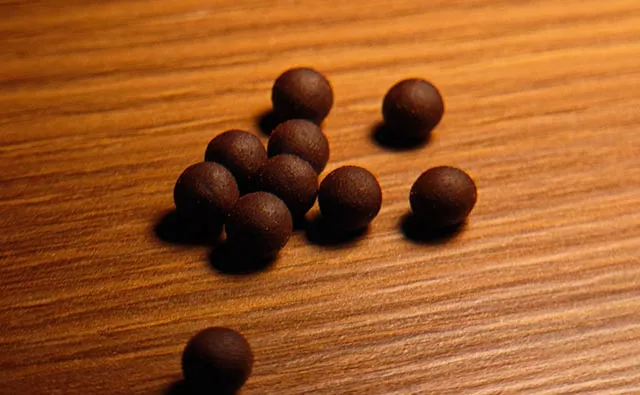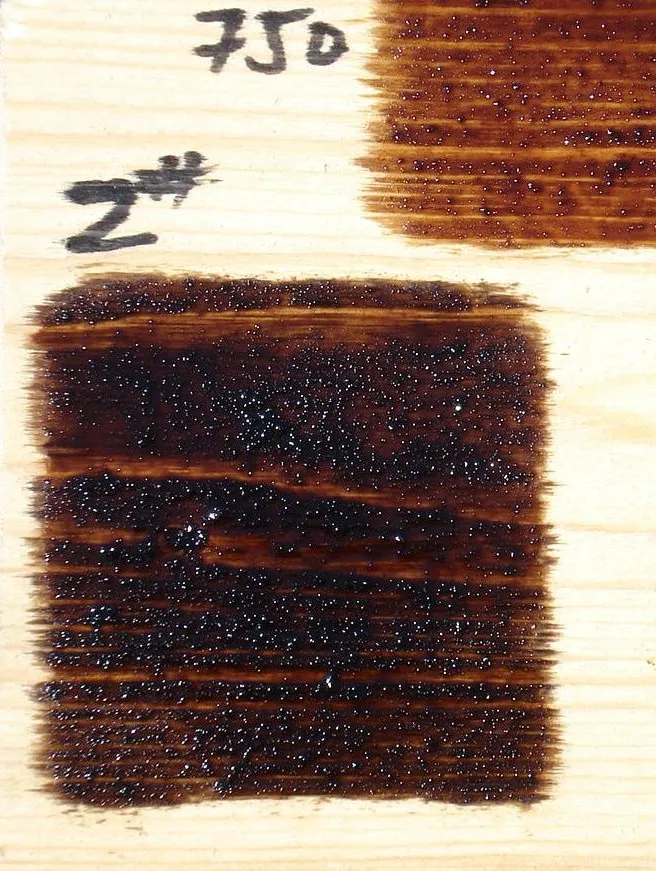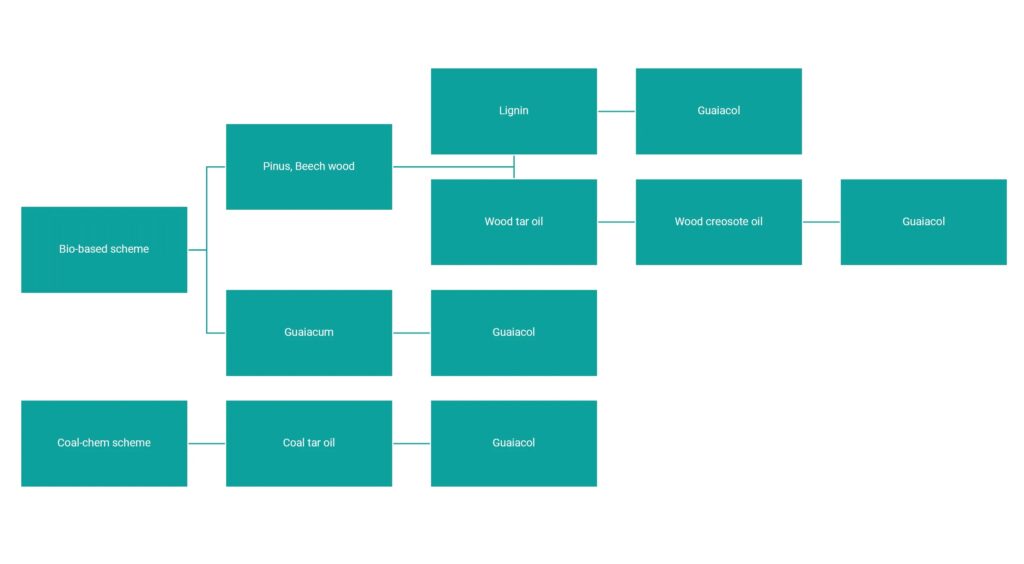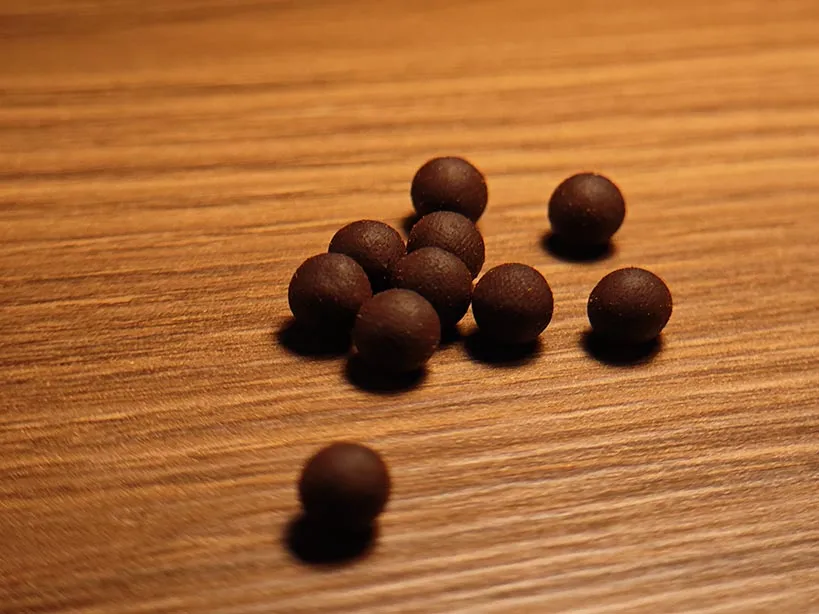Feature Article, Company News, PR
Characteristics, Overview, Applications, Markets of Guaiacol

Feature Article, Company News, PR

During high-temperature carbonization, pine and beech wood yield wood tar oil. Due to its excellent antioxidant and anti-corrosive properties, wood tar oil is often used to preserve wood, serving as a long-standing preservative material (such as the pine tar oil sold by Auson AB). It is also used to prevent metal rust [1]. Wood tar oil can be distilled to obtain wood creosote oil in the fraction range of 180 to 240°C [2]. Wood creosote oil contains several phenolic substances, including guaiacol (2-methoxyphenol), which can be separated from the oil by vacuum distillation.

Guaiacol is a white or light yellow oily liquid or crystalline substance, accompanied by a strong natural aroma. The traditional method of producing natural guaiacol involves using wood creosote oil from pine as a raw material. Guaiacol and other phenols are separated and distilled through reactions such as the calcium salt method, magnesium salt method, sodium salt method, and potassium salt method. Beech (Fagus longipetiolata Seem.) is another tree species used for extracting guaiacol. Its wood creosote oil contains about 25% guaiacol [3]. In recent years, there have been reports of a new laboratory method: guaiacol extraction from beech wood lignocellulosic fibers using supercritical carbon dioxide (scCO2) extraction during the decomposition process [4].
The demand for guaiacol is enormous. Guaiacol, prepared from coal tar, can be used to produce synthetic vanillin in the fragrance industry. This synthetic vanillin is commonly used in personal care product formulations. Guaiacol derived from wood creosote oil can produce high quality nature-identical vanillin. In the pharmaceutical field, it is often used in the form of medicinal-grade wood creosote oil in traditional medicine formulations to treat symptoms such as diarrhea and cough. Additionally, it can be synthesized to meet market demands. One synthetic route involves using o-amino phenylmethyl ether as a raw material, which undergoes diazotization and hydrolysis to produce guaiacol [5]. Another route involves the methylation reaction of resorcinol with methanol under catalyst action [6]. According to relevant market reports [7], the global market value of guaiacol reached $335 million by 2022.
In the fragrance and flavor industry, nature-identical vanillin is a key artificial flavor used to supplement the limited production of natural vanilla and ensure sustainable production of vanilla flavor materials. Vanillin is sourced from various sources, such as guaiacol from coal tar or wood tar oil, lignin from spruce trees, ferulic acid from rice bran, and eugenol from clove oil. All of these serve as production routes for vanillin.
In the US market, vanillin production from guaiacol (coal tar) and lignin is typically categorized as synthetic fragrance material [8, 9, 10]. On the other hand, vanillin produced from clove oil, ferulic acid, glucose, and other raw materials can be classified as natural ingredients [8, 11]. In 2013, IFF and Evolva successfully completed pilot production of vanillin using a fermentation process. This process involves hydrolyzing vanillin β-D-glucoside, which is produced during microbial fermentation, into vanillin [12]. Borregaard is the only company globally focused on wood-based vanillin derived from Norway Spruce and has captured a significant market share [13].

The certified bio-based route for producing vanillin from guaiacol usually starts with extracting 4-methylguaiacol (2-methoxy-4-methyl phenol) from pine-based guaiacol oil as the initial raw material. This compound is then oxidized to synthesize vanillin [14]. Additionally, guaiacol can also be used to synthesize eugenol. Eugenol can be obtained by direct allylation using allyl chloride, allyl alcohol, and other reagents with guaiacol as the starting material.
In addition to being primarily used for synthesizing vanillin, guaiacol can also be used in small amounts directly for fragrances with woody or floral notes. Pell Wall describes its fragrance profile as warm, smoky, vanilla, phenolic, soft, and woody. Very Powerful.” In the fragrance applications for personal care and home products, it can be widely used in formulations such as antiperspirants, shower gels, shampoos, laundry detergents, and other cleaning products.
Phenolic compounds such as guaiacol, 4-methylguaiacol, 4-ethylguaiacol, p-cresol, and 4-ethylphenol are common and important flavor substances found in various beverages such as wines, coffees, and spirits. In the flavor wheel of coffee, they are categorized as “Papery/Musty,” which is characterized by a damp, musty, and animal-hide-like aroma, reminiscent of a tack room. In the wine flavor wheel, these flavors may be labeled as “Toasted” or “Aging.” In the whiskey flavor wheel, these are referred to as “Peaty Flavors.” Among phenolic compounds, guaiacol has aromatic characteristics that include smoky, clove-like, and vanilla-like notes [15].
After analyzing the strong flavor Chinese liquor using high-throughput sequencing, the researchers identified 4-methylphenol as the substance responsible for creating the pit mud aroma during the liquor production [16]. Throughout the production process of alcoholic beverages, including brewing materials, saccharification, fermentation, and aging, microbial activities at each stage play a crucial role in shaping the final flavor profile. Research on the flavor of strong flavor Chinese liquor has found that 4-methylphenol primarily originates from the microbial colonies in pit mud during the fermentation process and the resulting interactions of their metabolites [16].
The flavor impact of guaiacol in the production of alcoholic beverages exhibits a dual nature. On one hand, guaiacol contributes to the development of the “grain aroma” in the brewing process of Chinese liquor, providing the characteristic flavor of steamed sorghum rice to the finished product [17]. On the other hand, guaiacol often serves as a source of “off-flavors” in alcoholic beverages. In a study on the influence of cork closures on wine flavor conducted by a Spanish research team, it was found that the microbial community within cork closures interacts with the wine after bottling, leading to the natural degradation of lignin [18]. Certain strains of bacteria, such as Streptomyces setonii, degrade vanillic acid [19] through the pathways involving guaiacol and catechol, resulting in off-flavors in red wine [18]. Guaiacol can also introduce similar off-flavors resembling decay in juices such as orange juice and apple juice. This off-flavor arises from the growth of Alicyclobacillus spp in the juice [20]. Japanese researchers studying the brewing process of Japanese sake found that during koji cultivation, vanillic acid is produced, and the microbial community metabolizes vanillic acid to produce guaiacol [21], imparting a unique phenolic aroma to Japanese sake. The metabolic conversion of vanillic acid into guaiacol [22] serves as the source of the distinctive phenolic flavor in sake.
In traditional medicinal formulas, wood creosote oil is commonly used to treat conditions related to diarrhea. Seirogan, a popular over-the-counter gastrointestinal medicine in Asian markets, is primarily composed of medicinal wood creosote oil in pills. In double-blind tests [23], Seirogan has been proven effective in treating abdominal cramps and diarrhea. These pills work by restoring normal peristalsis in the intestines, thereby suppressing diarrhea. Research has confirmed the inhibitory effect of wood creosote oil on gastrointestinal motility [24, 25, 26], with studies indicating that tangerine peel (Citri Unshiu Pericarpium) prolongs the retention time of guaiacol [27, 28] and enhances its anti-diarrheal effects [29].

Guaifenesin, also known as glyceryl guaiacolate, is an important expectorant pharmaceutical ingredient derived from guaiacol and glycerol through an epoxidation reaction. Its pharmacological action involves stimulating gastric mucosa, reflexively increasing secretion from respiratory glandular cells, thereby thinning mucus and making it easier to expectorate, thus exerting an expectorant effect. Potassium guaiacolsulfonate, is another important stimulating expectorant pharmaceutical ingredient derived from guaiacol through a sulfonation reaction. Its pharmacological action involves stimulating bronchial secretion, thinning mucus and facilitating expectoration, while also possessing some anti-inflammatory properties.
The production of guaiacol stems from a plethora of diverse sources. As the market continues to shift its focus towards environmentally-friendly and sustainable materials, there has been a noticeable surge in the request for guaiacol, the routes extracted from lignin and wood creosote oil. Vanillin, guaifenesin, and potassium guaiacolsulfonate continue to be in high demand from downstream industries, indicating a consistently stable market. Currently, there are ongoing studies on mutant strains in the metabolic engineering of Amycolatopsis sp., aiming to produce cis,cis-muconic acid from lignin hydrolysates rich in guaiacol [30]. This opens up new possibilities for the production of functional plastics from lignin polymers.